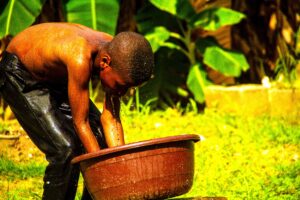Physical Address
23,24,25 & 26, 2nd Floor, Software Technology Park India, Opp: Garware Stadium,MIDC, Chikalthana, Aurangabad, Maharashtra – 431001 India
Physical Address
23,24,25 & 26, 2nd Floor, Software Technology Park India, Opp: Garware Stadium,MIDC, Chikalthana, Aurangabad, Maharashtra – 431001 India

The increasing impact of heatwaves in India has now led to a demand for its inclusion in the national list of disasters covered by the State and National Disaster Response Forces of India.
In a bid to address the public health crisis being posed by the frequent heatwaves sweeping through the nation, Lok Sabha MP from Assam, Pradyut Bordoloi, has appealed to the Union Home Minister to consider including Heatwaves in the list of disasters covered by the State and National Disaster Response forces.
The lawmaker took to Twitter to share the appeal he sent to the Union Home Minister Amit Shah, seeking recognition of heat waves as a national disaster, making those affected eligible for relief funds.
Here’s the post:
Bordoloi writes, “The Centre for Science and Environment’s report indicates that India witnessed record-breaking temperatures and heatwaves in 2022, with close to 280 heatwave days recorded between March and May across 16 states. Furthermore, the Global Climate Risk Index 2021 ranked India 7th among the most affected countries in terms of exposure to climate risk. The impact of heatwaves on our society is alarming. They pose direct health hazards, leading to hundreds of fatalities annually, especially for vulnerable individuals with pre-existing medical conditions.”
The year 2023 has seen multiple heat waves sweep across India one after another, claiming dozens of lives and affecting hundreds. Scientists say climate change caused temperatures in the region to rise by at least 2 degrees Celsius. Experts say this will only get worse, and India is not prepared. A World Bank Report stated that heat waves in India could exceed the human survival limit.
Heatwaves are now influencing the nation’s economic and development goals in addition to the health of its citizens. According to a study on the effects of the intense heat on India’s economy, public health, and agriculture, the country’s legislators grossly underestimate the effects of heat waves. The study also pointed out that the estimate by the Indian government that only 20 per cent of the country is vulnerable to the impacts of climate change is much lower than the reality and more than 90 per cent of the country is at risk. The study also highlights that India’s scorching heat is responsible for causing fatalities, illnesses, crop losses, and school closures, hindering the country’s progress.
“The workforce engaged in outdoor labor, such as agriculture and construction, faces serious threats to their well-being The non-recognition of heatwaves in the National Disaster Management Act, 2005, as a national disaster has several adverse consequences,” Bordoloi stated in his appeal.
The list of disasters notified in the Guidelines on Constitution and Administration of the State Disaster Response Fund (SDRF) and National Disaster Response Fund (NDRF) currently are cyclones, drought, earthquakes, fire, flood, tsunami, hailstorm, landslide, avalanche, cloudburst, pest attack, frost and cold waves.
A report from 2021, had projected that India would experience the highest loss of working hours globally, surpassing 100 billion hours annually, due to extreme heat conditions.
Welcoming Bordoloi’s suggestions, Environmental Scientist Dr Partha Jyoti Das said, “The heat waves are rising in intensity and spreading across the country faster than we thought even a decade back. Naturally, the loss, damage, and death due to episodes of heat waves is also on the increase. More people have died due to heat-related stress in India in the last five years than before. A large number of domestic and wild animals are also severely affected including loss of life due to severe heat strokes, which unfortunately and usually goes un-estimated. Erratic rainfall, especially prolonged dry periods due to absence of rainfall or little rainfall are also reasons for more episodes of heat stress being experienced of late.”
Heat waves are a major threat to agriculture regarding crop production and livestock health. Agricultural production may be significantly impacted by heat waves. They are capable of ruining crops, lowering output, and killing livestock. In addition to increasing water use, heat waves can put pressure on water supplies.
The MP, in his appeal, has also suggested that the accuracy of the heatwave mortality data should be enhanced and standardized reporting systems should be put into place to track heatwave impacts comprehensively. He also stressed the need for awareness campaigns to educate the public about heatwave risks, prevention measures, and early warning signs of heat-related illnesses.
“This is high time that we take extreme heat situations seriously for mitigation, risk reduction and adaptation. For this to happen, heat-related extreme events must be officially recognised as disasters or calamities preferably as climate-induced calamities. This will enable decision makers to make policies and action plans to reduce the impact of such extreme events on the health, mortality, and well-being of both human beings as well as wildlife and domestic animals. Recognition of heat extremes as disasters in policies like the National Disaster Management Act (2005), National Disaster Management Policy (2009) and the NAPCC (2008) is a desired step towards entitlement of compensation, and related benefits like insurance eligibility, and financial and technical support for mitigation and adaptation to adopt a climate-resilient lifestyle,” Dr Das added.
With the UN secretary general, António Guterres, recently declaring that “the era of global boiling has arrived” and July 2023 turning out to be the hottest month ever recorded, it is clear that the impacts of climate change are becoming increasingly evident and tangible in a rapidly warming world.
References:
https://www.who.int/india/heat-waves
https://openknowledge.worldbank.org/entities/publication/b584ffe6-c549-5f0f-85bb-aefe3ea71901
https://www.mha.gov.in/MHA1/Par2017/pdfs/par2023-pdfs/RS08022023/691.pdf